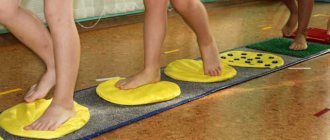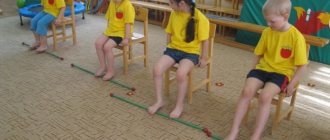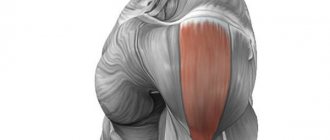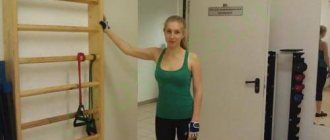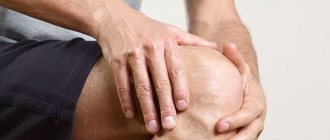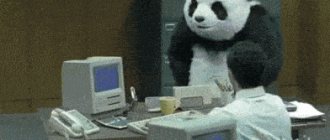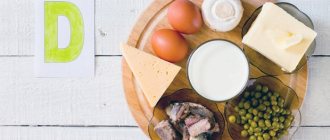What does the concept of agility include?
Agility should be understood as the ability to quickly change the position of the body in space while maintaining balance. Athletes who focus on increasing muscle strength and power experience considerable difficulty in developing this skill.
Regularly performing exercises to develop dexterity allows you to hone movements to perfection, which are accompanied by the difficulty of coordinating the body in space. This moment requires the use of a wide range of muscles simultaneously and the immediate activation of reflexes.
One of the criteria of dexterity is the accuracy of movements. Without bringing the parameter to perfection, there is an inevitable loss of balance. Progress can be achieved here by training the vestibular apparatus and developing the necessary reactions from the nervous system.
An important point in achieving agility is the speed of spatial change in body position. The faster a person groups his limbs dynamically, the greater the effect of the expended strength and power.
What is dexterity needed for?
The question of what agility is for may seem absurd, but in reality few of us can answer it correctly. Let's look at the history of the origin of this word. The words “ dexterity ” and “ catch ” are not just consonant - they have the same root. At the dawn of human development, when food had to be obtained in difficult and sometimes risky ways, successful hunters and fishermen were often called “ dodgers ” for their unsurpassed physical qualities. Over time, people who had lightning-fast reactions began to be called this: fighters, acrobats, magicians and even thieves.
But let's return to our topic. So what is dexterity for? In everyday life, the ability to coordinate our movements literally helps us stand firmly on our feet: when traveling on public transport, on ice and in many other situations. In addition, this is an indispensable quality for cycling, skating, rollerblading, snowboarding or choreographic classes.
A good reaction is the key to success for team sports athletes. Flexibility, plasticity, and the ability to maintain balance are important for gymnasts. And even in strength sports you can’t do without this skill: one unsuccessful movement when lifting a lot of weight - and a serious injury is guaranteed. Therefore, muscle coordination is so necessary for the harmonious development of the body .
What sports provide agility development?
There is a wide range of sports disciplines that help improve agility performance:
- cross-country skiing, biathlon, snowboarding;
- figure skating;
- skating;
- trampolining;
- synchronized swimming, diving;
- freestyle cycling and motorcycle racing;
- Athletics;
- team games.
The development of agility is also achieved through all-around training. Skill progress is observed while performing any exercises on the bar. Various types of long and high jumps can only be successfully performed by athletes who know how to change the position of the body in space in a limited time period.
How to develop coordination abilities
Why develop?
The process of mastering motor actions is much more successful if the student has strong, resilient and fast muscles, a flexible body, highly developed coordination abilities (CS): he knows how to control himself, his body, his movements. In addition, a high level of development of physical abilities is an important component of good health.
In general, motor abilities can be defined as individual characteristics that determine the level of a person’s motor capabilities. They manifest themselves in certain movements, which differ in a number of characteristics - both qualitative and quantitative. Coordination abilities (coordination, or dexterity) contribute to the accurate reproduction, differentiation and measurement of spatial, power and temporal parameters of movements; orientation and quick response in difficult conditions; coordination (connection) and restructuring of motor activity; voluntary muscle relaxation, and also develop a sense of rhythm and the ability to maintain balance.
When to develop?
Adolescence is a turning point in the development of a child’s motor functions. By the age of 11–12, students mainly master basic motor actions in running, jumping, throwing, climbing, etc. They have very favorable prerequisites for in-depth work on the development of motor abilities. In this regard, one of the main tasks that a teacher must solve is to ensure the comprehensive development of children’s coordination abilities. At this age, mastery of basic motor actions continues, including the technique of basic sports (athletics, gymnastics, sports games, martial arts, skiing, swimming). Learning the complex techniques of these sports is based on the motor skills acquired during primary school. Technical and technical-tactical training of children aged 10–11 years is most closely intertwined with the development of KS.
It is necessary to develop a CS for four main reasons:
- Well-developed CS contribute to the successful development of physical exercises.
- Fully formed CS are necessary conditions for preparing children for life and work.
- CS provide economical expenditure of energy potentials (physical abilities - strength, speed, endurance) of children, since muscle effort precisely dosed in time, space and degree of tension and optimal use of the corresponding relaxation phases lead to rational expenditure of energy forces.
- A variety of exercise options used for the development of CS allow you to avoid monotony and monotony in training, and bring joy from participating in sports activities.
There are five types of CS:
– kinesthetic differentiation; - sense of rhythm; – reaction; – balance; – orientation in space.
All five CS need to be developed and improved at all stages of schooling.
How to develop?
Exercises with balls
These exercises are an important means of developing and improving coordination abilities in younger children, including in play. Exercises with balls of different weights and shapes have a positive effect on children’s development of a variety of skills in writing, drawing, modeling, etc. Already the first exercises in catching, passing and dribbling the ball require children of junior squads to develop coordination abilities. Working with balls during sports activities has a positive effect on the development of the spinal cord in children.
Learning to handle a ball of different weights and shapes can begin with the junior squad, and these skills are consolidated and improved year after year. The following exercises can be used during sports activities:
– passing the ball from hand to hand while standing in a line (in front of the chest, behind the back); – passing the ball from hand to hand while standing in a column (over the head, between the legs); – throwing the ball down and catching it with both hands; – throwing the ball up and catching it with both hands while standing, in a sitting position, legs apart; – hitting the ball on the floor with two hands and one hand (front, right, left), followed by catching with two hands; – passing and catching the ball with both hands from below the chest, from behind the head, in pairs; – tossing with the right or left hand followed by catching with both hands; – throwing the ball at the wall and then catching it with both hands; – dribbling the ball in place, around the body, with the right and left hand while walking and running; – throwing the ball over the net; – relay races and outdoor games: “Ball in the basket”, “Quickly and accurately”, “Hit the hoop”, “Roll the ball”, “Pass the ball”, “Ball race in a circle”, “Get hold of the ball”, “Ball to the catcher” , "Fight for the ball."
Gaming martial arts
Coordination abilities are well developed in martial arts games. These include outdoor games: “Cockfighting”, “Sentries and Scouts”, “Tug of War”, “Tug of War in Pairs”, “Pushing Out of the Circle”, and in senior squads - all sports games (basketball, volleyball, football) and etc.
Outdoor games
The development of the KS is also successfully carried out in such games and relay races as: “Third is a wheel”, “Head and tail”, “Everyone is behind the leader!”, “Stay on your haunches!”, “Who is faster?”, “Tag with a ball”, “Friendly threes”, “Hidden pass”, “Relay with a gymnastic stick”, “Take the ball away after the turn!”, “Relay with jumps over bumps”, “Shuttle pass of the ball”, etc.
Sport games
Sports games, more than other sports, contribute to the development of the CS, instilling in children a sense of teamwork, perseverance, determination, dedication, attention and quick thinking, and also teach children to manage their emotions and improve their basic physical qualities. Modern sports games are complex and versatile activities. There are many similar components in the construction of technical and tactical actions. Let's look at a few examples.
Volleyball lesson
Top direct feed
When learning to serve the ball in volleyball, you can use the following exercises to improve the CS:
- Multiple acceptance of i.p. for the top serve of the ball, moving along the side and end lines.
- Repeatedly throwing the ball up with the left hand with a swing of the hitting hand.
- Repeatedly throwing the ball and catching it at the moment of impact (the left hand blocks the path of the ball).
- Exercise in pairs. Participants are located on opposite side lines of the site. One player performs an overhead straight serve in the direction of a partner, the other, having caught the ball, performs the same task.
- Top direct feed into the wall from a distance of 7–9 m, which must be made no lower than the line drawn on the wall at a height corresponding to the upper edge of the wall.
- Serving the ball over the wall from a distance of 7–9 m.
- Performing an overhead serve of the ball from a distance of 7–9 m from the net to the right and left sides of the court.
Forward kick
When studying an attacking strike, you can use the following exercises to improve the CS:
- Imitation of an attacking blow with the body turning to the right and left in the presence of a stationary single block.
- Throwing tennis balls with the body turning to the right and left.
- Performing an attacking strike with the body turning to the right and left from one’s own toss in the presence of a stationary single block.
- Attacking strikes with transfer from zones 4, 2, 3 against group (double) blocking.
- Offensive strikes with a transfer from zone 3 after a pass from zone 2 (4) against a single block.
athletics sport activity
In athletics, you can use many different running methods, including shuttle running (3?10 m, 4?9 m, 6?5 m, 10?10 m, 5?10 m), jumping, throwing, relay races, exercises with and without objects.
When studying different ways of moving, stopping and turning, the following exercises are used to improve the CS:
- Jerks to a certain landmark and return to the starting position.
- Running while jumping over obstacles, pushing off with one leg; two legs.
- Jerks from different I.P. (lying, sitting, etc.).
- Jumping alternating with running.
- Run from one landmark to another, stopping at each one.
- Running over obstacles.
- Running while shifting various objects.
- Relay race with jumping from foot to foot (“over bumps”).
Competitive-game method
Nowadays, it is necessary to use the competitive-game method more. It contributes to both general physical and special training of children. In addition, this kind of task carries a great emotional charge, which is an effective means of not only physical development, but also spiritual education. The conditions of the game teach children to subordinate their actions to the interests of the team in order to achieve a common goal, to act with maximum effort and capabilities, to overcome difficulties during sports competition, to constantly monitor the progress of the game, to instantly assess the changed situation and make the right decisions.
Testing coordination abilities
The results of control tests that determine the CS are strongly influenced by external conditions. Therefore, it is necessary to give children the opportunity to complete several qualifying attempts (from 2 to 5), and in throwing - from 8 to 10. Testing is carried out in the first quarter and a second time at the end of the school year. Also, if necessary, you can use tests before and after passing the next section of the curriculum.
To determine the CS, it is better to use the following tests:
– shuttle run 3x10 m; – 3 somersaults forward; – throwing a tennis ball with the leading hand at a distance; – throwing a tennis ball for accuracy from a sitting position on the floor, legs apart; – dribbling a basketball with your leading hand while running while changing the direction of movement.
Jumping rope
Let's move on to talking about exercises to develop dexterity, flexibility and coordination. One of the best solutions to achieve your goal is jumping rope. First, take a vertical stance, placing your feet together. They hop on the right and left legs, alternating limbs. After completing a series of exercises, they begin to cross the rope with their hands in front of them after one revolution.
Training promotes the development of coordination in the hand-foot-eye system. Improves sense of time and level of endurance. The rhythm of movements is honed.
Developing a skill from childhood
The more time a child devotes to sports activities, for example, table tennis, acrobatics, and simply active games, the better his dexterity and coordination develop.
Given the normal state of the nervous system and vestibular apparatus, dexterity at birth varies slightly among different children. But then, depending on the lifestyle, the potential is lost. As a result, someone cannot catch a tennis ball thrown at him from 10 meters, and someone hits a basketball with a basketball from 20 meters, standing with their back to it. Let's look at why this happens.
Childhood is the most convenient time for developing the necessary physical characteristics. Muscle memory absorbs all movements like a sponge, firmly preserving them for many years. Then, as the child gets older, the ability to learn begins to fade. Of course, it's never too late to learn. But at 18–20 years old, training any physical skill will be somewhat more difficult than at 13–14. And after 30 years, solving the same problem will require even more time and effort. It's the same with coordination. The sooner you start working on it, the easier it will be to achieve results.
Balancing in a one-legged stance
A set of exercises to develop dexterity should include balancing on your leg. The essence of the training is as follows. Take a straight stance with your arms spread wide to the sides. The support is performed on one leg. The second limb is slightly bent at the knee, holding it suspended. In this position, the head is tilted to the right and left, back and forth. They try not to concentrate their gaze on the surrounding objects, which makes it easier to maintain balance. When the exercise for developing dexterity begins to be easy, the exercises begin to be performed with eyes closed.
Simple coordination tests
Let's do the following test: try to rotate your hand clockwise, and the same arm at the elbow counterclockwise. It doesn't work out, does it? But it works great to rotate it all in one direction. This is because our coordination center is accustomed to symmetry, peace, and synchronicity. If something needs to be done not according to the usual scenario, difficulties arise, because the brain and body do not know how to do this, they need to be taught. By the way, this is the first coordination exercise, in fact, the beginning of its training.
Another test: stand on one leg, take the other back, arms to the sides. Close your eyes and count how long you can stand like this. This is also a coordination exercise that will help improve your balance and agility.
Third test: take 2 tennis balls (by the way, let them lie at home, sometimes they are useful) and throw them against the wall alternately with your right and left hand - it works out well, right? Now stand on one leg and do the same. More difficult? There is such a moment. And now the best part - jump on one leg and continue throwing and catching balls. Everything, stupor, confusion, the balls flew into the corners, and you actually fell.
There is also more than one coordination test, you can come up with anything you want. Just order your body to perform a non-standard set of movements. And you will see how imperfect your body is in this regard.
Leg lunge from fighting stance
Take a vertical body position. Place your palms clenched into fists in front of you at chest level. The knee of the right leg is pulled up here with a sharp movement. At the same time, perform a light jump on the supporting limb. Then they change legs and repeat the above steps.
The exercise is suitable for developing dexterity, sense of balance, and coordination of movements. By balancing on one limb, a person learns to maintain his center of gravity.
Agility is a motor quality
It includes:
- coordination abilities (coordination and rearrangement of movements, differentiation of efforts, muscle coordination, voluntary relaxation)
- various reactions (visual-motor, attention switching)
- feelings (balance, time and space, orientation, rhythm)
In order to achieve a high level of agility efficiently and effectively, you need to work on developing and improving all parts that make up this physical quality.
Among physical abilities, agility occupies a special position. It has a wide variety of connections with other physical qualities, is closely related to motor skills and therefore has the most complex nature. To be dexterous in movements, to be able to quickly and correctly solve motor problems, you must be strong, fast, resilient, have good mobility in the joints, and have high willpower. The more complex the movements or actions, the faster the dexterity must be demonstrated, the more perfect it should be.
The main parameters for measuring agility are the coordination complexity of movements or motor actions and the accuracy of movement.
Somersaults with a ball
A good exercise for developing dexterity would be the following:
- armed with a basketball, they perform sweeps, rhythmically hitting the projectile on a plane;
- the sphere is securely clasped with your palms and somersaulted forward over your head;
- upon completion of the movement, the ball is left on the ground;
- carry out the lift, take the sports equipment again and return to the series of postings.
To achieve noticeable progress in agility training, you should perform the indicated cycle of movements for 2-3 minutes per session.
Exercises to develop dexterity and coordination
Here are a few simple exercises to develop dexterity and coordination that will synchronize the work of your muscles, but will not take much time and effort.
Exercises to Strengthen Neuromuscular Connection
- We stand up straight with our arms stretched out in front of us. We make simultaneous rotational movements with our hands: with our right hand clockwise, with our left hand counterclockwise. We perform 10-15 repetitions.
- Let's complicate the previous exercise. We stretch one hand forward and begin to describe clockwise circles with it. At the same time, we try to rotate the brush in the opposite direction. The task seems impossible, but regular practice will soon clear your doubts. The main thing is not to make sudden movements with the hand, otherwise you can injure the ligaments. We also perform 10-15 repetitions.
- We again stretch both arms forward and begin to simultaneously draw different geometric shapes in the air. For example, the right one draws a square, and the left one draws a circle, and so on. After 10-15 repetitions, change the “pattern” for each hand.
- Another simple exercise to develop dexterity and coordination that we loved to entertain ourselves with as children: we raise and lower our right palm above our heads, lightly touching the crown of the head, and with our left we make rotational movements in a vertical plane around the abdomen.
Exercises to develop coordination
- Stand on one leg . We try to maintain balance on one leg for 60 seconds. At the same time, we move our arms to the sides and turn our heads left and right. When you are sufficiently trained, the exercise can be performed with your eyes closed.
- Jumping on one leg . It's simple - we jump on one leg and land on the other. And so on for 2-3 minutes.
- Throwing the ball while standing on one leg . We approach the wall at arm's length. Standing on one leg, we throw the ball at it and catch it on the rebound. At the same time, we concentrate all our attention only on the ball.
- Martin . We balance while standing on one leg. The arms are spread to the sides, the free leg is pulled back to the level of the pelvis. Keep your back straight, look straight ahead. The supporting leg should also be straight. We stand in this position for at least 1 minute, after which we change legs. medicine ball in your arms outstretched forward .
- Running with obstacles . If there is no suitable sports ground nearby, you can run cross-country. For example, in the forest, bending around tree trunks and jumping over fallen logs.
- Walking on a balance beam is a simple but very effective exercise for developing dexterity and coordination. If desired, it can be replaced with a less risky workout - walking along curbs in the park.
- The next exercise can be done literally on the go - while you're on the bus. While standing near the handrail, try to maintain balance on your feet alone.
Exercises to develop dexterity and fine motor skills of the hands
- Juggling . Who among us as a child was not amazed by the skill of circus jugglers? It's time to take something from their arsenal into our arsenal. To do this, we don’t need to perform intricate pirouettes with clubs or move heavy weights. We'll make do with a couple of tennis balls.
- The next exercise is performed together. We stand near the wall and throw the ball at it so that our partner catches it on the rebound. Then your partner repeats the same thing, and you catch.
- Somersaults with catching a ball . This element is borrowed from rhythmic gymnastics. We throw the ball high, perform a somersault and catch the projectile. You can complicate the exercise as follows: try to catch the ball in a jump after performing a somersault.
- Exercises with a basketball will also help develop a lightning-fast reaction . First, practice simply dribbling one, then two balls, while raising your hips high. Make it more difficult by jumping and dribbling the ball at the same time. Perform left-right turns at right angles while dribbling two balls at once. You can also dribble the ball while jumping over the bench in four directions.
- Push-ups with clapping. They are performed in a faster, “explosive” manner than standard ones. At the moment of extension of the elbows, we try to throw the body as high as possible in order to have time to clap our hands without falling.
- Walking on hands while pushing the ball . Even in the standard version, this is a very difficult exercise that only trained people can do. If you are not yet ready for such tests, seek the help of a friend. You need your partner to hold your legs, and you walk on your hands, pushing the ball in front of you.
- To develop dexterity and fine motor skills of your hands, practice simply hitting a tennis ball , shifting your body to the sides.
It must be said that any team sports (football, hockey, basketball and others) also help improve reaction speed.
Exercises to develop agility and coordination must be approached as responsibly as in the case of any training: do not abuse the training time and take proper rest .
Somersaults back and forth
In order to perform a physical exercise to develop dexterity, take a squatting body position. Place your palms on the floor in front of you. Press the chin tightly to the chest. Make a smooth somersault over the head in the frontal direction. The exercise is repeated 10-15 times. Then they move on to somersaults over their heads back.
Training allows you to achieve progress in the development of general coordination. Skills are honed that can become useful during a fall. To avoid injury, exercise should be done on an unsteady surface.
Jumping with a turn
To prepare for an exercise aimed at developing dexterity, draw a circle on the floor. The diameter of the latter should be about one meter. Located in the center of the figure. They jump up sharply, trying to turn their body 180 degrees. Repeat the movement, making another turn in the opposite direction.
Having achieved noticeable progress in performing the exercise, subsequent jumps should be done with a 360o turn of the body. It is advisable to conduct training in a free room or in the fresh air. During class, it is important not to leave the circle.
How to develop dexterity
Agility is an innate quality, but with diligent training you can achieve good results. A dexterous person, in most cases, of short stature. From birth, such people already have a quick reaction and dexterity than people of above average height.
Dexterity and coordination have a very close relationship, so by developing coordination of movements, we thereby increase agility.
How to develop agility through certain sports? By practicing water skiing or diving, you will noticeably improve your agility.
The development of dexterity also occurs when walking on bars or rails.
Well, if you are not involved in a specific sport, you will have a question: How to become agile by doing exercises at home or, say, on the street?
Here are some exercises that will improve your dexterity. They can be performed alone or with a friend, at home, on the street or in nature.
1. You need to simultaneously dribble two balls in a straight line, while you are not just running, but raising your hips high;
2. Exercise in pairs. Stand at a distance of 4-5 m from your partner, let one pass the ball to the other with his foot, and the second tries to dodge;
3. Make sure that the ball rolls freely in a straight line, while you jump over it on two or one leg. Do this at maximum speed;
4. This exercise will require additional training on your part.
You must be able to juggle two objects. You need to juggle and move around the bench;
5. Exercises in which you need to learn to stand on your hands and then walk on your hands are very useful;
6. You jump over the bench and at the same time pass the ball against the wall;
7. While jumping over the gymnastics bench, you simultaneously dribble the ball.
By doing these exercises regularly, you will improve your physical abilities.
Dexterity is the basis of the basics, one might even say physical intelligence.
With due diligence and the necessary knowledge, you can not only become faster and more agile, but gain a truly lightning-fast reaction. In our article we will give examples of several simple exercises to develop dexterity and coordination.
Tossing a ball with your eyes closed
In order to develop agility, it is useful to regularly resort to the following training. Perform a vertical stand. Grab a small ball with your palm. Close your eyes and extend your hand holding the projectile in front of you. The ball is thrown with a smooth movement in a vertical plane. Without opening their eyes, they try to catch the thrown object. You should perform the exercise during training until you manage to catch the ball on the first try every time.
The activity provides not only the development of dexterity. A person acquires spatial thinking, the ability to estimate the distance to an object according to sound. At the same time, coordination increases due to the need to maintain a stationary vertical stance.
How to assess the degree of progress in the development of dexterity?
Before starting your next lesson, you should take a simple test. It is enough to stand on one leg. The second limb should be raised to a comfortable height. You should stand in this position for close to a minute. During the lesson, you need to note how easy it is to maintain your balance. It is recommended to repeat the test with your eyes closed. The main task is to maintain a completely motionless stance for 30 seconds. If achieving this result is difficult, you need to continue training aimed at developing agility.
Vestibular apparatus
This segment of the brain helps our body determine where is down and where is up, where is right and where is left. It works due to hydraulic pressure on special receptors. If you remove gravity, the vestibular apparatus will simply be lost.
This part of the brain is responsible for balance and dexterity. There is also a special training for him, which can really help you quickly adapt to sudden non-standard movements.
Test for the vestibular apparatus (or balance): stand up straight, use your legs to make 10 rotations clockwise, then immediately 10 rotations counterclockwise. Stop suddenly and try to stand on one leg. After this, many people are unlikely to be able to resist even two. This test shows the level of development of your vestibular system. By the way, dancing, acrobatics, figure skating, and pole exercises help strengthen it well.
Over time, if it is not trained, the vestibular apparatus degrades, and it becomes more difficult for the body to adapt after rotations and sudden changes in position. Nausea and dizziness may occur. By the way, nausea from air pockets on an airplane or from sudden accelerations is a sign of a weakened vestibular system.
A good way to develop it is this:
- Stand straight, arms along your body or cross them over your chest.
- Make 10 clockwise turns using your lower back. That is, the legs are in place, everything above the pelvis rotates. The greater the amplitude of rotation, the better.
- Stop suddenly, listen to your feelings. If nausea occurs, do another 10 repetitions, but at a slower pace.
- If there is no nausea, make 10 turns counterclockwise.
- Enough for the first time. Repeat the exercise the next day, but double the number of rotations.
- Then turn on rhythmic music and do these rotations for 10, 20, 30 minutes. On the one hand, your lateral abs and lower back will be pumped up, and on the other, your vestibular apparatus will be normal. And one more bonus - if you suddenly take more alcohol than you can and feel the so-called helicopters, you will no longer run to the toilet. However, we do not recommend drinking.
Now you know how to strengthen the vestibular apparatus. You already know a couple of exercises for coordination and agility, here are a few more.
